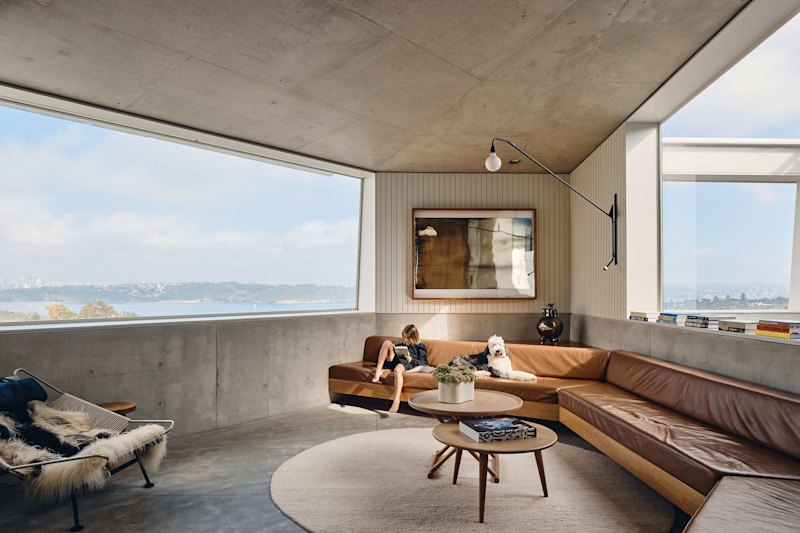How to spend your kitchen renovation budget

Large Open-Plan Kitchen by Skyring Architects
Author: Anne Ellard
No matter what budget you begin with, planning a kitchen renovation is always a financial balancing act. When it comes down to it, it’s likely that you’ll need to compromise on the cost of some features in order to make room in the budget for the features that are most important to you. But how do you know what those things are?
Based on my experience as a kitchen designer, here are my suggestions for what to save on (features you can spend less money on without compromising on style, quality or functionality) and what to spend on (features that are worth investing in and prioritising for minimal hassle in the long run).

SPEND ON: Appliances
Good quality appliances are the most important features in your kitchen. It’s important to choose designs that do the hard work for you. For example, consider an oven that has a pyrolytic self-cleaning system. It’s basically a function that you set the oven to in which it cleans itself while you relax with a cup of tea! This pyrolytic function does add a bit to the cost, but the convenience of not having to spend hours scrubbing the oven with smelly cleaners is worth it.
It’s also a good idea to prioritise energy efficiency in appliances that are on all day (fridges, for example) and to invest in slimmer options that save on space.
TIP: When purchasing new appliances, ask the store if they are selling any of their display models for a discount. They will be ‘sold as seen’, which means there may be scratches or other damage on the appliance, but this will be reflected in the price. Also ask about package deals. Often if you purchase an oven and cooktop, you can avail a discounted price on the rangehood, for example.
10 questions to ask yourself before buying any kitchen appliance

SAVE ON: Handles
A stylish handle doesn’t have to carry a big price tag. You can pick up some great kitchen cabinet handles on average for as little as $4 each. Check out online wholesalers and speak to other Houzz users who may be able to recommend places where they have found good deals in the past.
Expect to pay a lot more for a handle that is made entirely from stainless steel. Unless you live near the sea where salt water corrosion is an issue, stainless steel is not necessary. Zinc aluminium alloy is used to manufacture the majority of kitchen cabinet handles – it’s a much more cost-effective material and can be finished in many ways.
TIP: If you choose knobs that only require one hole to be drilled in your cabinet doors, they will be easy to replace in a few months/years if you fancy a change. So if you don’t overspend now you will be able to justify a change later!
6 factors to consider when choosing handles for your kitchen cabinets

SPEND ON: Drawer and hinge hardware
Good quality hardware is one of the best investments you can make in your new kitchen. There is nothing more annoying than a door that keeps falling off its hinges or a drawer that keeps sticking or breaking because it cant handle the weight.
Soft closing hinges and drawers tend to cost a bit more than non soft closing hinges but its a small luxury that most of my clients are not willing to live without. Look for hardware that carries a long warranty – some hardware brands even carry a lifetime warranty.
TIP: When choosing drawer hardware, ask what the load capacity of the drawer runners is to ensure that its enough to hold everything you want to store in them, especially if your drawers are going to be long and deep. Choose the greatest load capacity that you can afford and you will thank yourself later when you are packing your new drawers full of heavy plates, pots and pans.
SAVE ON: Cabinet fronts
You don’t have to blow your budget on the fronts of your new kitchen cabinets – the main thing is to ensure that both the cabinet internals and the doors are hard-wearing and will stand the test of time. You can update the cupboard door fronts again and again, depending on your budget.

SPEND ON: Benchtops
Your kitchen benchtop will take a bit of a beating over its lifetime. Heavy items will get dropped on it, hot items accidentally put down on it, harsh cleaning chemicals spilled on it, and strong coloured foods (turmeric, red wine) splashed on it – and that’s before your children get into the kitchen.
Regardless of what material you choose for your benchtops, ensure it is good quality, carries a good warranty, is stain, heat and water resistant, and is easy to clean. A natural granite or engineered stone benchtop will be resistant to all of the above if you choose a good quality product. Cheaper materials will be prone to chipping and cracking and are not likely to resist stains very well; they’ll cost you more in the long run.
Get expert advice on benchtop materials
SAVE ON: Fancy gadgets
I love pull-outs and gadgets as much as the next person, and I’m not going to suggest that you rule them out altogether, but you should choose them wisely. Before you go for a fancy new solution, have a look to see whether you can recreate the same functionality without the spend.
I often find that my clients get much better use out of an L-shape under bench corner cabinet that has a simple shelf in it as opposed to one that has an expensive spin around carousel in it. The shelf allows them to store large appliances such as their rice cooker and smoothie maker – items that often take up too much space on the bench.
Also watch out for flashy drawer inserts. Simple cutlery and utensil dividers are essential to keep your drawers neat and tidy, however many other drawer inserts and dividers can cause more confusion than ease. In any case, these inserts and dividers can be added at a later date so you can try the kitchen out before you buy.
SPEND ON: Quality workmanship
A well-made, good-quality kitchen will really stand the test of time and serve you well for many years to come. Do your research into the suppliers that you are considering and the materials they use. Regardless of the supplier you use, check out their warranty and check online for reviews.
TIP: When it comes to installing new cabinets, it’s tempting to save a buck or two by installing it yourself. Only consider this option if you are confident that you can do a good job. If not, leave it to the professionals. It’s definitely worth the investment. Not only is it faster, it will also save you a lot of money spent on fixing out-of-square walls, uneven floors and misshapen kickboards.
Find a kitchen professional in your area

SAVE ON: Splashbacks
Glass splashbacks are probably the most popular choice these days. They’re easy to clean and tough, but because of these traits they can go for around $400 per square metre. There are, however, more cost-effective options worth considering.
Acrylic splashbacks look just like glass but are a fraction of the cost. Be aware, though, that they are not suitable for use behind a cooktop unless you have included the manufacturer-specified clearance distance between the back of the cooktop and the splashback. One way around this is to use a heat-resistant material such as stainless steel directly behind the cooktop and to use acrylic everywhere else.
Large tiles are another great alternative to glass and are a lot more cost effective – you could pick up a fantastic tile for $45 per square metre, a fraction of the cost of glass. If you feel confident, tiling your splashback is something you could consider doing yourself. The larger the tile, the less grout there will be and therefore the easier your splashback will be to clean.
We recommend
We thought you might like
States
Capital Cities
Capital Cities - Rentals
Popular Areas
Allhomes
More







